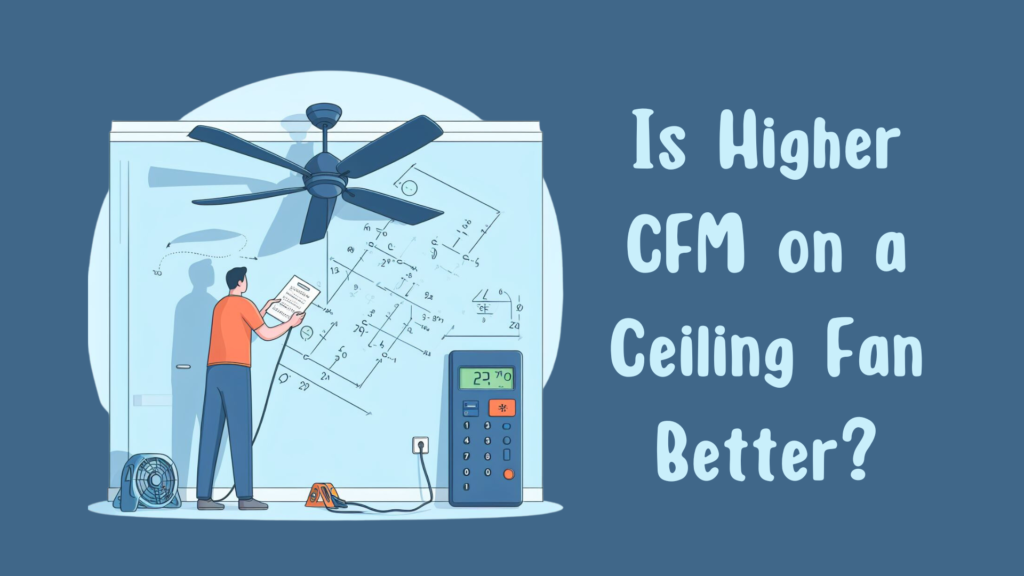
Ceiling fans are indispensable fixtures, offering a cost-effective way to enhance comfort and air circulation in your home. When choosing the perfect ceiling fan, understanding critical factors like CFM (cubic feet per minute) is key. But does a higher CFM always guarantee better performance? Let’s explore this question and navigate the nuances of CFM for your specific needs.
Understanding CFM Dynamics
CFM measures the volume of air a ceiling fan can move in a minute. While a higher CFM generally signals improved air circulation, its appropriateness hinges on various factors.
Room Size Matters
The size of your room plays a pivotal role in determining the right CFM for your ceiling fan. For smaller rooms, opting for a higher CFM might be excessive, causing discomfort and unnecessary energy consumption. On the other hand, larger spaces benefit from a higher CFM for even air distribution. Calculate the ideal CFM for your room using the formula:
Room Size (in square feet) x Ceiling Height (in feet) x 1.25 = Recommended CFM
Explore our article on Optimal Ceiling Fan Performance in Spacious Rooms for more insights.
Efficiency and Energy Consumption
Selecting a ceiling fan with excessively high CFM for a small room risks overcooling and increased electricity consumption. Striking a balance between CFM and room size ensures an energy-efficient and cost-effective solution. Dive deeper into this topic with our guide on Cost-Effective Ceiling Fan Operation.
Considerate Noise Management
Ceiling fans with extremely high CFM ratings may generate more noise, which can be disruptive in bedrooms or quiet spaces. When deciding on CFM, consider noise levels to prioritize comfort. Learn more about Reducing Noise in Ceiling Fans in our comprehensive guide.
Striking the Perfect Balance
While a higher CFM is advantageous in larger rooms, finding the right balance is crucial. Opt for a fan with adjustable settings to control CFM output, allowing you to adapt the fan’s performance to your specific needs. Discover more in our article on Smart Ceiling Fans with Customizable Settings.
In Conclusion
The question, “Does a Higher CFM on a Ceiling Fan Improve Performance?” lacks a one-size-fits-all response. The ideal CFM rating depends on room size, comfort preferences, energy efficiency, and noise tolerance. By considering these factors, you can make an informed decision that optimizes your ceiling fan’s performance.
Ensure your chosen ceiling fan allows CFM adjustments, striking the perfect balance between comfort, efficiency, and functionality. For a seamless and cool living space, explore our articles on Ceiling Fans for High Ceilings and Latest Bladeless Ceiling Fan Models.
